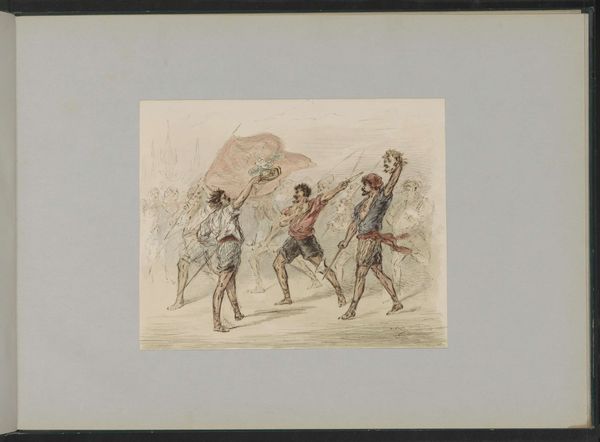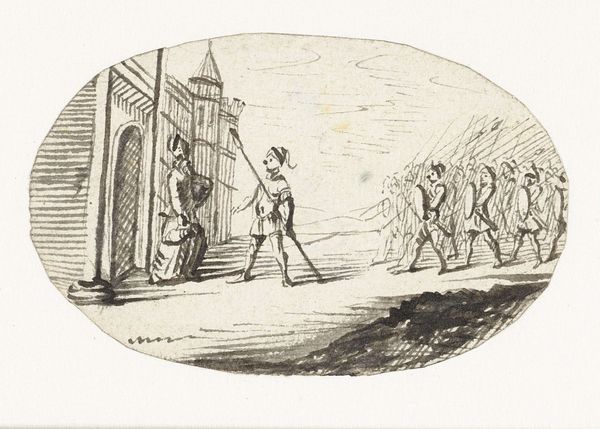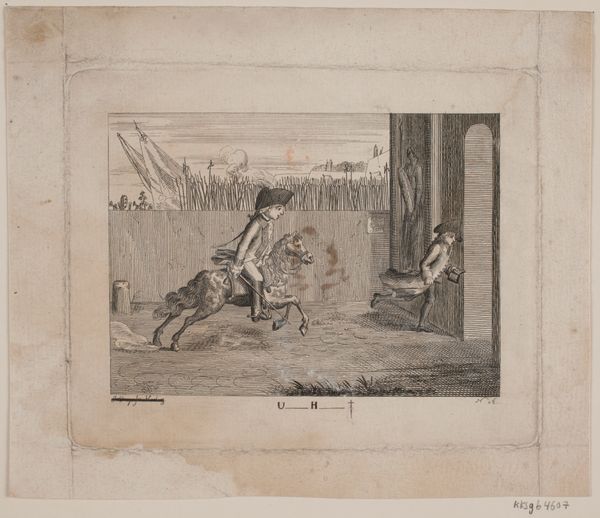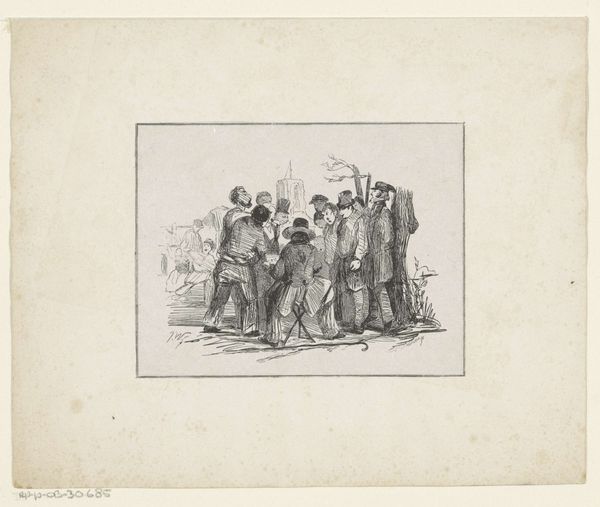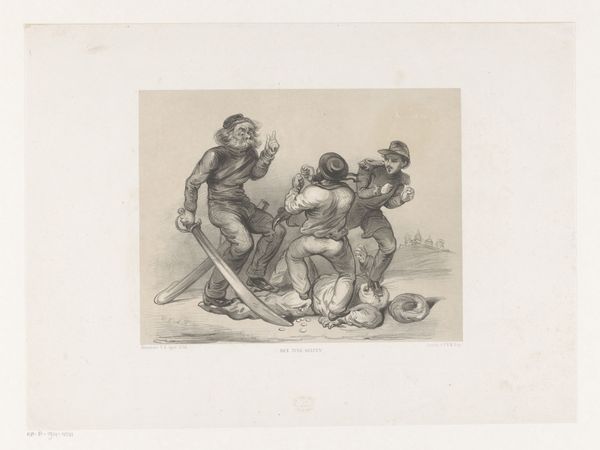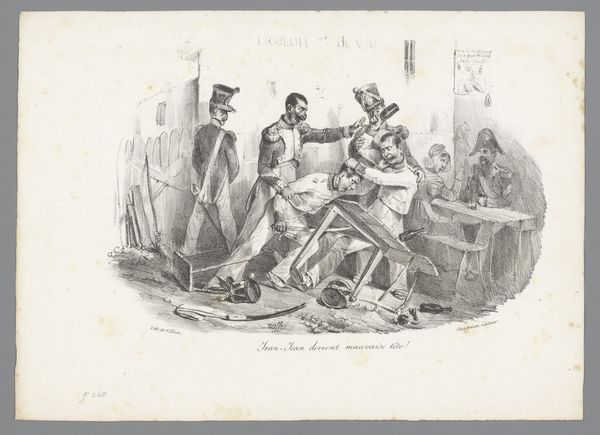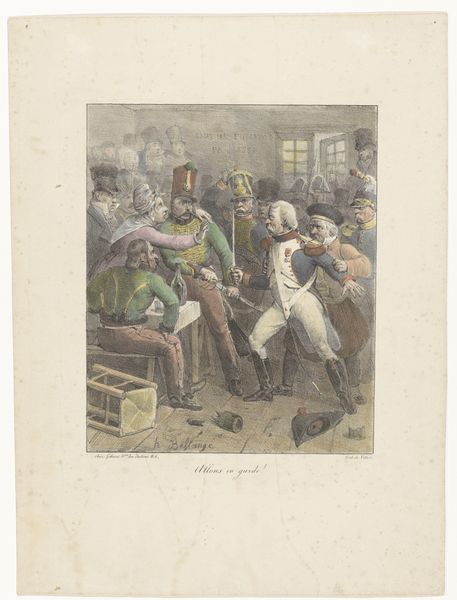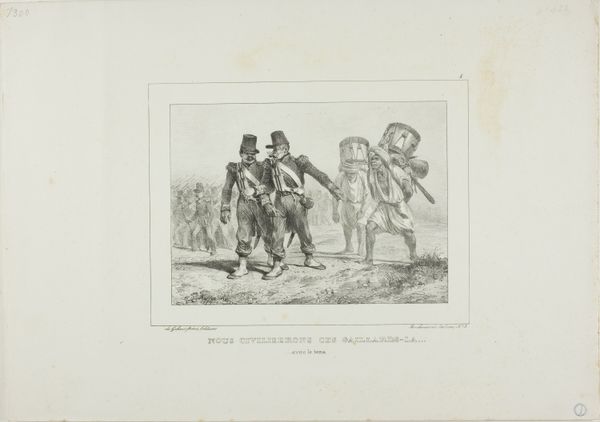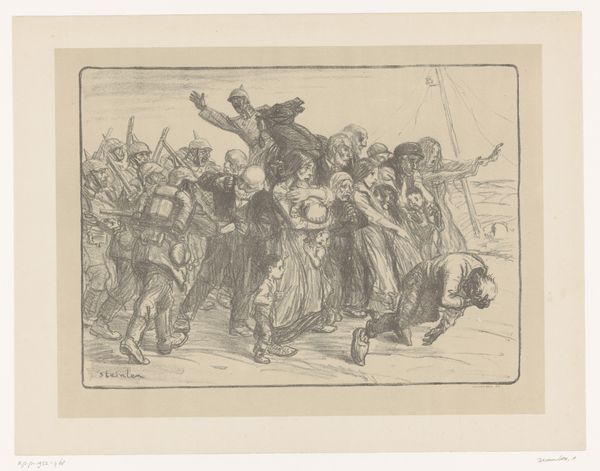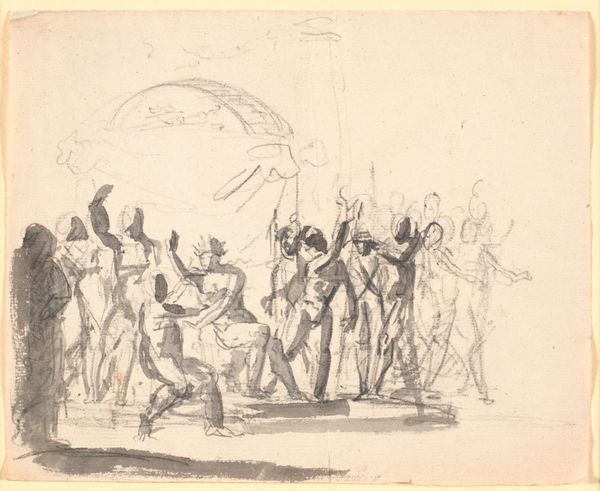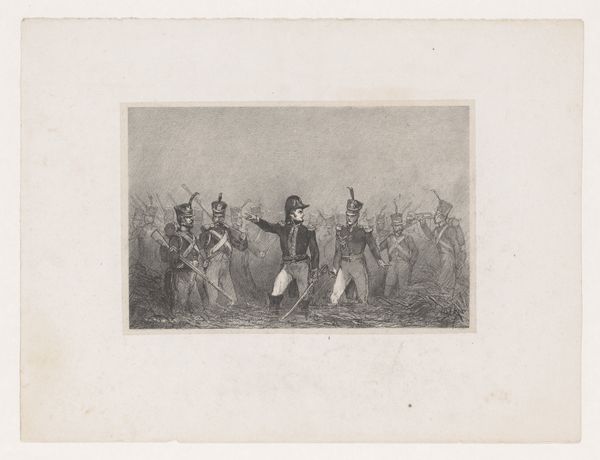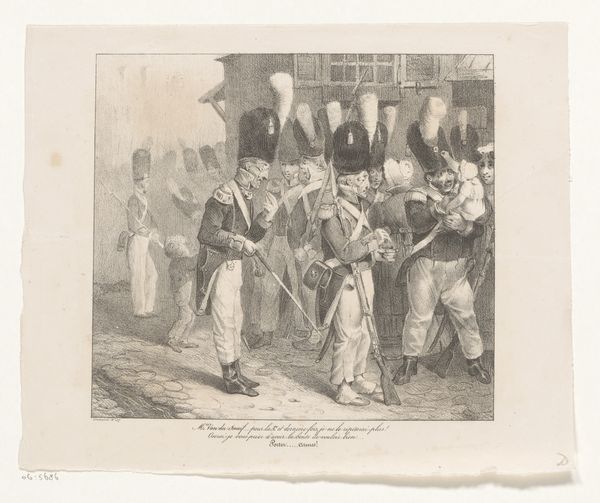
De zelfopoffering van burgemeester van der Werff tijdens het beleg van Leiden, 1574 1824 - 1894
0:00
0:00
drawing, pencil
#
portrait
#
drawing
#
narrative-art
#
dutch-golden-age
#
landscape
#
pencil
#
genre-painting
#
history-painting
#
realism
Dimensions: height 280 mm, width 356 mm
Copyright: Rijks Museum: Open Domain
Curator: This pencil drawing by Charles Rochussen, dating from between 1824 and 1894, captures a pivotal moment in Dutch history. It’s titled "The self-sacrifice of Mayor van der Werff during the siege of Leiden, 1574." Editor: Wow, that’s intense! My first impression is of dramatic contrast – a figure standing resolute amid supplication, it looks heavy with meaning. You can feel the pressure weighing down the scene. Curator: The siege of Leiden was a brutal episode. The city was starving, and Rochussen depicts the moment when desperate citizens plead with their mayor, Van der Werff, to surrender. But what does it all mean, this pictorial decision making process? Editor: The symbolism is layered, as is so often the case with national myth-making, but a central theme here is civic virtue and what can be perceived to be moral responsibility. Van der Werff offered his own body as food to reassure people that it's time to act morally despite how hopeless it seems: his unyielding stance symbolizes resilience. The drawing emphasizes that the body of commoner becomes sacred by such sacrifices, at least symbolically so. Note how even those in supplication remain watchful of Van der Werffs movement... Curator: His figure truly anchors the composition. His firm stance is very much about standing in contrast to the pleading figures on the left and at the same time it conveys the weight of his responsibility... The choice of rendering with just pencil further emphasizes austerity and simplicity appropriate for representing profound stoicism under enormous pressure. There's a clear contrast with the golden age of Dutch art - like a shift toward raw historical truths. What feelings and thoughts might you bring to the scene from such perspectives? Editor: Looking at the art’s historicity from a modern perspective and being detached enough for that reason brings the scene together. I begin wondering how it affects our current world and if it inspires me for how society may progress in future through that single most impacting figure in history: humans as a whole. Curator: It makes you question what a self sacrificing deed of a moral body actually achieves for a whole body politic doesn’t it? That's Rochussen's enduring question for me as well. Thanks for diving into these images. Editor: Thank you for lending an interpretive hand and the wisdom behind this historical and visually profound piece!
Comments
No comments
Be the first to comment and join the conversation on the ultimate creative platform.
